Australian birdwatching is a vibrant hobby, enriched by the continent’s unique avifauna. Field guides like Pizzey and Knight’s or Simpson and Day’s are essential tools, helping enthusiasts identify species, understand behaviors, and explore habitats, making birding accessible and rewarding for both novices and experts.
1.1. Importance of Field Guides in Birdwatching
Field guides are indispensable for birdwatchers, offering detailed species descriptions, plumage variations, and habitat insights. They enable quick identification, helping enthusiasts recognize birds accurately. Guides like Pizzey and Knight’s or Simpson and Day’s are trusted resources, providing essential information on behavior, calls, and distribution. They also include visual aids like illustrations and maps, making birding more accessible. Field guides foster deeper appreciation for Australia’s avifauna, aiding both novices and experts. Additionally, they promote ethical birding practices, such as approaching birds quietly and responsibly. These tools are vital for enhancing the birdwatching experience and conservation efforts.
1.2. Brief Overview of Australian Avifauna
Australia’s avifauna is remarkably diverse, with over 800 species, many of which are endemic. The continent’s unique isolation has fostered the evolution of distinct bird families, such as kookaburras, cockatoos, and fairy-wrens. Migratory birds, like the Latham’s snipe, also contribute to this richness. Field guides highlight species adapted to varied habitats, from rainforests to deserts. This diversity makes Australia a global birdwatching hotspot, attracting enthusiasts eager to explore its avifauna.
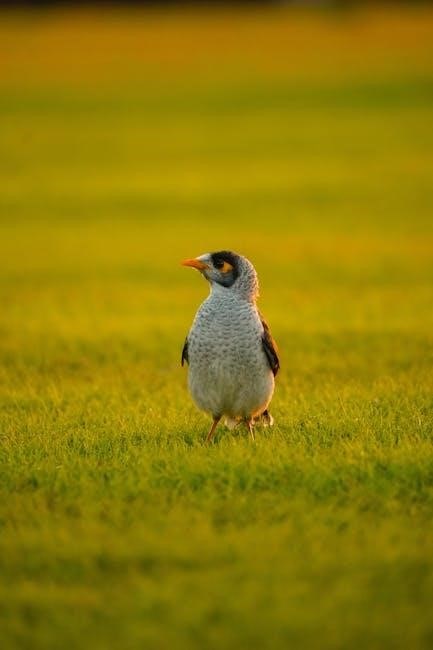
History of Australian Bird Field Guides
Australian bird field guides have a rich history, beginning with early publications that laid the groundwork for modern birdwatching. Classic guides like Pizzey and Knight’s have significantly influenced the hobby, providing detailed information and inspiring enthusiasts to explore Australia’s avifauna.
2.1. Early Publications and Their Impact
The earliest Australian bird field guides, such as Cayley’s What Bird is That? (1931), were foundational, offering basic identifications and sparking public interest in birdwatching. These pioneering works, often simple in design, focused on essential descriptions and plumage details, laying the groundwork for modern guides. They not only educated but also inspired a generation of birders, fostering a deeper appreciation for Australia’s avifauna. Early publications like these were instrumental in establishing birdwatching as a popular hobby, while their limitations highlighted the need for more comprehensive and detailed guides in the future.
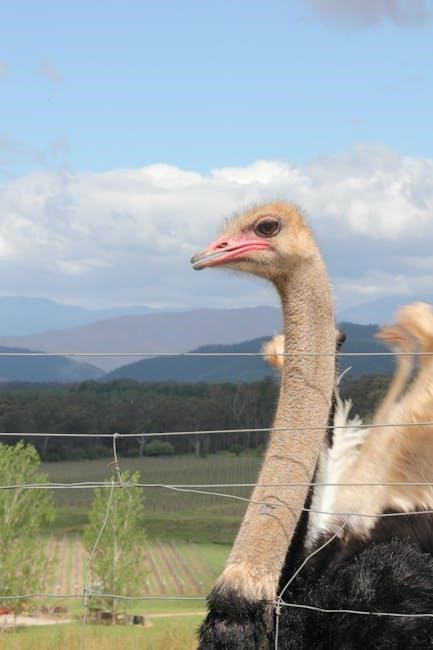
2.2. Evolution of Field Guide Features and Design
Over time, Australian bird field guides have evolved significantly, enhancing both functionality and user experience. Early guides often featured basic text and limited illustrations, but advancements in printing technology allowed for more detailed and accurate images. Modern guides now include high-quality photographs, comparative illustrations, and distribution maps, aiding precise identification. Features like quick reference icons, habitat descriptions, and behavioral notes have become standard, catering to both novice and experienced birders. The integration of digital tools, such as companion apps, has further enriched these resources, ensuring they remain indispensable for birdwatching enthusiasts. This evolution reflects a commitment to improving accessibility and depth of information.
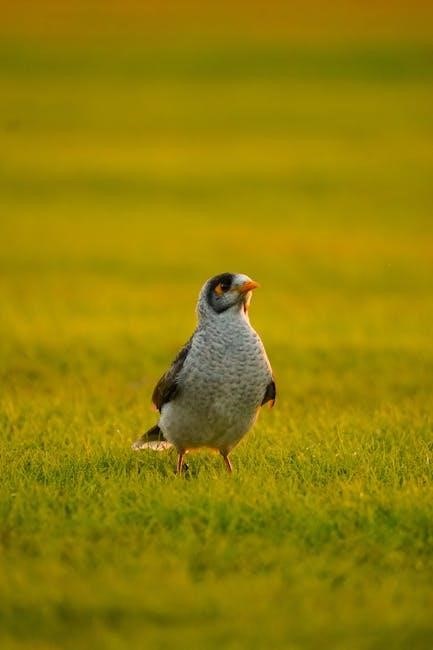
Key Features of Modern Field Guides
Modern field guides boast detailed illustrations, plumage descriptions, and habitat maps, enhancing species identification. They also include bird calls, behaviors, and distribution data, making them comprehensive resources for birders.
3.1. Detailed Illustrations and Plumage Descriptions
Detailed illustrations and plumage descriptions are crucial in modern field guides, offering precise visual aids for identifying birds. These features depict various plumage stages, seasonal changes, and sex differences, aiding enthusiasts in accurately distinguishing species. Illustrations often include typical postures and behaviors, while descriptions highlight key field marks, making identification more straightforward. Such visual and textual details help birders recognize birds in their natural habitats, even when certain features are obscured. These elements are meticulously crafted to ensure clarity and accuracy, making field guides indispensable for both novice and experienced birdwatchers in Australia.
3.2. Habitat and Distribution Maps
Habitat and distribution maps in field guides provide essential insights into where specific bird species can be found. These maps detail geographic ranges, preferred habitats, and seasonal movements, helping birders locate species effectively. By illustrating regions and ecosystems, the maps enable enthusiasts to plan birding trips and understand ecological preferences. They often highlight migration patterns and breeding areas, offering a visual guide to species distribution. Such maps are created using extensive data from sightings and surveys, ensuring accuracy and reliability. They complement detailed illustrations and descriptions, making field guides a comprehensive resource for identifying and locating Australia’s diverse avifauna, whether in urban areas or remote wilderness.
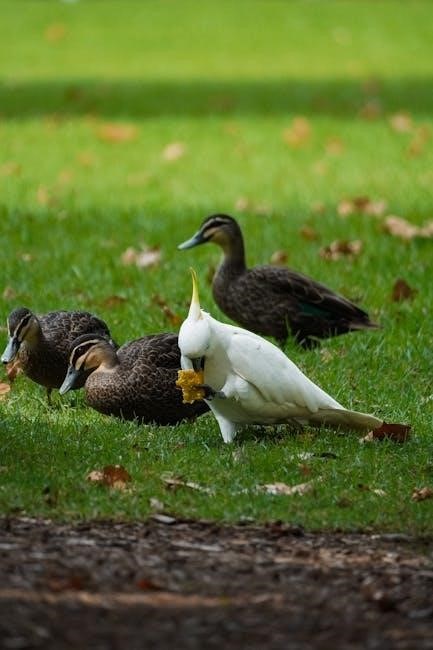
Using the Field Guide Effectively
Mastering quick identification techniques and understanding bird calls and behaviors enhances field guide use. Start with binoculars for a clear view, then match observations with guide details. Approach birds quietly to avoid disturbance, ensuring ethical birding practices while maximizing identification success.
4.1. Quick Identification Techniques
Quick identification techniques involve observing key features like size, shape, plumage, and distinctive markings. Start by noting the bird’s overall silhouette and color patterns. Compare these with field guide illustrations, focusing on beak shape, wingbars, and tail length. Pay attention to behavior, such as foraging habits or flight patterns. Habitat clues are also crucial, as many species are location-specific. Use binoculars for a closer look before consulting the guide. By prioritizing these elements, birders can efficiently narrow down possibilities, even with limited sightings. This method ensures accuracy and speeds up the identification process, making birdwatching more enjoyable and productive for all skill levels.
4.2. Understanding Bird Calls and Behaviors
Understanding bird calls and behaviors is crucial for effective identification. Many species can be identified by their distinctive vocalizations, such as melodic songs or alarm calls. Field guides often include descriptions of these sounds, aiding in recognition. Observing behaviors, like foraging patterns or flight styles, also provides clues. For example, a bird repeatedly diving into water may be a kingfisher, while one hopping tree to tree could be a treecreeper. Combining these observations with visual cues enhances accuracy. Apps like BirdNet further assist by matching recorded calls to species. By mastering these techniques, birders can identify birds more efficiently, even when visual details are unclear.
Key Bird Species of Australia
Australia is home to iconic birds like kookaburras, cockatoos, and sulfur-crested cockatoos. These species are celebrated for their vibrant plumage and unique calls, embodying the nation’s avifauna.

5.1. Endemic Species and Their Significance
Australia boasts over 400 bird species, with many being endemic, such as the kookaburra and sulphur-crested cockatoo. These unique birds are crucial to ecosystems, aiding pollination and seed dispersal. Their distinctive calls and vibrant plumage make them cultural icons, often symbolizing Australian identity. Field guides like Pizzey and Knight’s provide detailed insights into these species, helping birders appreciate their ecological and cultural importance. Endemic birds are vital for maintaining biodiversity and serve as indicators of environmental health, making their conservation a priority for sustainable ecosystems.
5.2. Migratory Birds and Their Patterns
Australia is a critical stopover for migratory birds traveling from Siberia, Alaska, and Southeast Asia. Species like the Latham’s Snipe and Eastern Curlew undertake remarkable journeys, relying on Australian wetlands for refuge. These birds typically arrive between September and April, exploiting abundant food sources during the southern summer. Their migration patterns, often following ancient flyways like the East Asian-Australasian Flyway, highlight Australia’s role in global bird migration networks. Field guides detail these movements, aiding birders in tracking species. However, climate change and habitat loss threaten these incredible journeys, emphasizing the need for conservation efforts to protect these avian travelers and their vital migration corridors.

Birdwatching Tips and Best Practices
Birdwatching requires patience, knowledge, and a quiet approach. Move slowly, use binoculars for clear views, and rely on field guides for accurate identification. Ethical practices ensure bird welfare and sustainable birding experiences.
6.1. Essential Gear for Birding Adventures
A successful birding adventure requires the right equipment. A high-quality field guide, such as Pizzey and Knight’s or Simpson and Day’s, is indispensable for identifying species. Binoculars are crucial for observing birds at a distance without disturbing them. A spotting scope can be useful for viewing birds in remote or hard-to-reach locations. Comfortable clothing, sturdy footwear, and a hat are practical for long outings. A notebook and pencil are handy for recording observations and sketches. Additionally, birding apps like BirdNet can help identify species by their calls, enhancing your birdwatching experience. Proper gear ensures you’re prepared and comfortable, making your adventures more enjoyable and productive.
6.2. Approaching Birds Quietly and Ethically
Approaching birds quietly and ethically is essential for responsible birdwatching. Move slowly, avoid sudden movements, and keep a safe distance to prevent startling them. Use binoculars to observe without disturbing the birds, allowing you to study their behavior and plumage. Refrain from using playback of bird calls, as this can stress the birds and disrupt their natural activities. Respect their habitat by staying on designated paths and not damaging vegetation. Ethical birdwatching ensures the well-being of the birds and preserves the environment for future enthusiasts. By being mindful of your approach, you contribute to a positive and sustainable birding experience.
Regional Birding Guides
Regional birding guides provide in-depth insights into specific areas, such as Eastern Australia’s hotspots and Western Australia’s unique species, aiding birders in exploring diverse avifauna effectively.
7.1. Hotspots in Eastern Australia
Eastern Australia boasts some of the most renowned birding hotspots, including Lamington National Park and the Daintree Rainforest. These regions are rich in endemic species, such as the Eastern Whipbird and Regent Bowerbird. Field guides highlight these areas for their dense rainforests and diverse avifauna. Birders often flock to coastal wetlands like Moreton Bay, where migratory waders and shorebirds congregate. The Great Dividing Range also offers elevated habitats, home to species like the Satin Bowerbird. Seasonal patterns and habitat diversity make Eastern Australia a paradise for birdwatchers, with guides providing essential insights for navigating these prime locations effectively.
7.2. Unique Species of Western Australia
Western Australia is home to a variety of unique bird species, many of which are endemic to the region. The state’s isolation has allowed species like the Western Bristlebird and the Red-capped Parrot to thrive in distinct habitats. Field guides highlight these birds, often found in the southwestern forests and coastal heathlands. The Carnaby’s Black-Cockatoo and the Western Corella are among the iconic species that draw birders to the area. These birds, along with others, make Western Australia a standout destination for those seeking to spot region-specific avifauna, showcasing the diversity of Australia’s birdlife in this unique ecological zone.
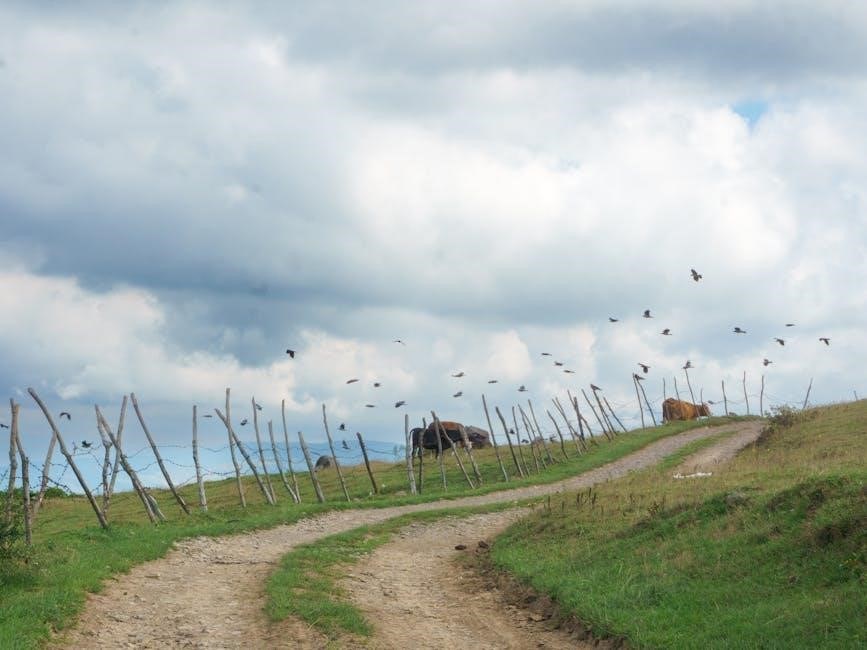
Technology in Bird Identification
Technology has revolutionized bird identification through apps like BirdNet and online platforms, enabling quick species recognition via sound and visual analysis, making birding more accessible and efficient.
8.1. Birding Apps and Online Resources
Modern birding apps like BirdNet and eBird have transformed identification, offering sound recognition and real-time sighting maps. Online platforms provide checklists, while iNaturalist aids in species verification. These tools, enhanced by machine learning, enable precise identifications and foster community sharing, making birdwatching more dynamic and accessible for enthusiasts worldwide.
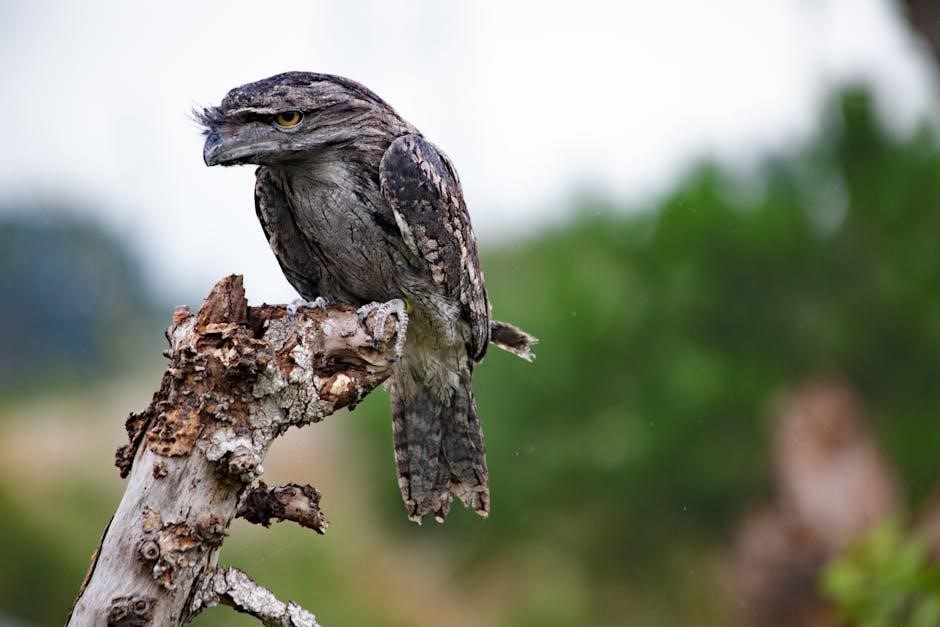
Conservation Efforts and Birdwatching
Birdwatching supports conservation by raising awareness of threats like habitat loss and climate change. Citizen science projects and ethical birding practices help protect avifauna and their ecosystems.
9.1. Threats to Bird Populations
Australian bird populations face numerous threats, including habitat destruction, climate change, and invasive species. Deforestation and urbanization reduce nesting and feeding grounds, while rising temperatures alter ecosystems. Invasive predators like cats and foxes prey on native birds, exacerbating declines. Pollution and pesticides further harm avifauna, disrupting food chains. Climate-driven changes in weather patterns also affect migratory birds, disrupting breeding and feeding cycles. These challenges highlight the urgent need for conservation efforts to protect Australia’s unique bird species and their habitats, ensuring their survival for future generations of birdwatchers and researchers. Field guides play a crucial role in raising awareness of these threats.
9.2. How Birders Can Contribute to Conservation
Birders play a vital role in conservation by supporting research, citizen science, and habitat protection. Using field guides, they can accurately identify species and report sightings to platforms like eBird, aiding population tracking. Birders can also participate in bird counts and surveys, providing valuable data for conservation efforts. Supporting organizations that protect habitats and advocate for bird-friendly policies is another way to contribute. By spreading awareness and promoting ethical birdwatching practices, birders help safeguard Australia’s avifauna. Their passion and knowledge can inspire others to join conservation initiatives, ensuring the preservation of bird species for future generations. Every effort, no matter how small, makes a difference.
Future of Field Guides
The future of field guides lies in digital evolution, offering interactive maps, real-time updates, and 3D imagery, enhancing user experience and accessibility for bird enthusiasts worldwide.
10.1. Digital vs. Print: Changing Preferences
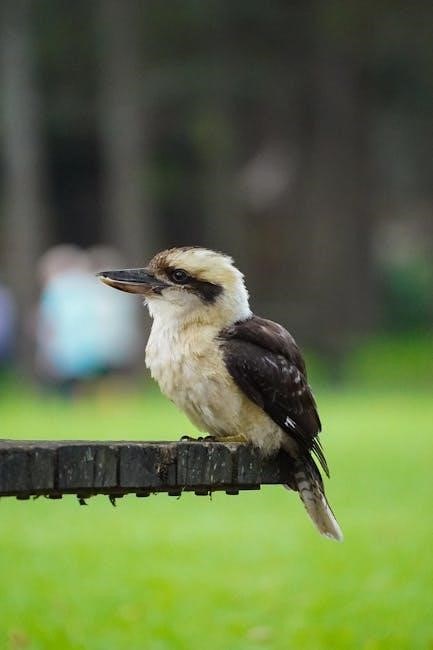
The shift from print to digital field guides reflects evolving preferences among birdwatchers. Digital versions offer portability, searchability, and real-time updates, enhancing accessibility for modern users.
10.2. Innovations in Field Guide Design
Modern field guides incorporate cutting-edge design elements, enhancing user experience. High-resolution images and updated taxonomy ensure accuracy, while interactive features like bird call databases and visual recognition tools make identification easier. These innovations cater to both traditional and digital users, enriching the birdwatching experience and providing comprehensive resources for enthusiasts;
Australian birdwatching, supported by field guides like Pizzey and Knight’s, offers a gateway to exploring the continent’s diverse avifauna. These guides, evolving with technology, now include digital features and updated species data, enhancing identification accuracy. Birders can leverage apps and online resources for real-time insights, fostering a deeper connection with nature. Conservation efforts are crucial, and every birder plays a role in protecting these species. As field guides adapt to modern demands, they remain indispensable tools, inspiring both seasoned experts and newcomers to embrace the joy of birdwatching while contributing to the preservation of Australia’s natural heritage.